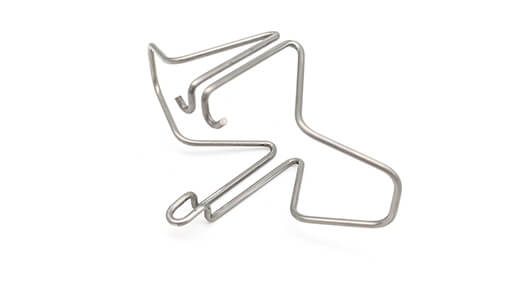Get unique, complex parts easily. No matter your requirements, Chaoyi Spring creates hard-to-produce coil springs and wire forms.
Let us help you create the custom wire form you need, from S-hooks and J-hooks to utility hooks and more.
We work closely with customers across a wide range of industries, helping them design and manufacture made-to-order parts.
Why choose Chaoyi Spring? We prioritize customer-focused collaboration, modern equipment and the latest technology to make your parts per print.
Find the information and guidance you need, from measuring a spring to learning about materials, placing an order and much more.
Often hidden from view, compression springs are ubiquitous in mechanical systems, quietly performing their crucial role in countless applications. From the simple act of pushing a button to the complex


Often hidden from view, compression springs are ubiquitous in mechanical systems, quietly performing their crucial role in countless applications. From the simple act of pushing a button to the complex workings of a car engine, these coiled marvels provide force, energy storage, and support, ensuring smooth operation and reliable performance. In this article, we delve into the world of compression springs, exploring their design principles, materials, applications, and the factors that make them essential components in modern engineering.

Compression springs, as their name suggests, are designed to resist compressive forces. When subjected to a load, they deform, storing potential energy that can be released upon removal of the load. This ability to absorb and release energy makes them ideal for a wide array of applications.
A typical compression spring consists of a helical coil made of spring wire, often a high-strength metal like steel, stainless steel, or even exotic alloys. The wire is wound into a helix, with a specific number of coils and a precise pitch (distance between coils). This carefully controlled geometry determines the spring's stiffness, its ability to resist deformation under load.
Designing a compression spring involves careful consideration of several factors, including:
Compression springs are incredibly versatile and find applications in a myriad of industries, including:
Compression springs offer several advantages that make them indispensable in mechanical design:
While compression springs are generally reliable, they can fail under certain conditions. Common causes of failure include:
Understanding the potential causes of failure is crucial for ensuring the longevity and reliability of compression springs in various applications.
When selecting a compression spring, it's essential to consider the following factors:
By carefully evaluating these factors, you can choose the most appropriate compression spring for your specific application.
From the smallest everyday objects to the most complex machinery, compression springs play a crucial role in ensuring smooth operation, efficient performance, and reliable functionality. Understanding their design principles, material properties, and applications is key to leveraging their potential in various fields. As we continue to innovate and explore new frontiers in engineering, compression springs remain indispensable components, silently contributing to the advancement of technology and improving our lives in countless ways.
Browse some of the custom wire forms and springs that we manufacture. Don’t see what you need? We specialize in made-to-order products that meet your application requirements.
Visit Our GalleryNeed a custom wire form or coil spring? We make it work. Fill out the contact form and a representative will respond within 1 business day. If you have a PDF or CAD file, you can submit to request a quote.